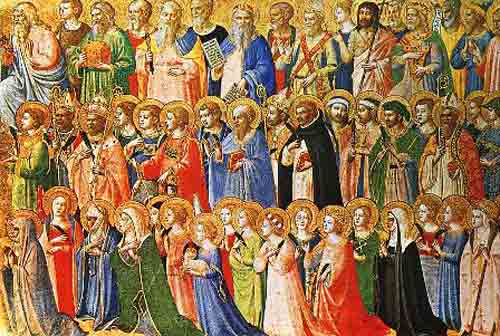
I need your help in doing some liturgical detective work. I’ve already had a few behind-the-scenes conversations.
It all started with my recent work on NZ Anglican’s moving William Tyndale’s commemoration in favour of commemorating The Saints and Martyrs of Asia on October 6. The rest of the world remembers Tyndale on that date.
The Anglican Church in Aotearoa, New Zealand and Polynesia has 6 “Regional Commemorations”:
- The Saints and Martyrs of Africa, 20 February
- The Saints and Martyrs of the Americas, 8 April
- The Saints and Martyrs of Europe, 30 July
- The Saints and Martyrs of the Pacific, 7 September
- The Saints and Martyrs of Asia, 6 October
- The Saints and Martyrs of the Anglican Communion, 8 November
All of these, except “The Saints and Martyrs of the Pacific, 7 September”, were in the Revised Calendar of 1972. The Pacific commemoration was also missing in The New Zealand Calendar 1980.
The collect provided in that 1972 publication was:
Almighty God,
from every nation you call your people to show forth your glory in life and death:
May we following the example of the Saints and Martyrs of (N)
and being strengthened by their fellowship,
be found faithful in the service of your kingdom,
through Jesus Christ the King and Lord of all. Amen.
Before proceeding, I might note that I am unconvinced that these generic commemorations absolve from having a more universal church calendar, one that shows specific examples of “people who have provided inspiration and an example of Christian living in the history of” a specific region (cf NZPBHKMA p10). Generic regional commemorations do not really move us further away from a Eurocentric image of sanctity (which even influences our images of our Middle Eastern saints – cf the image above).
An off-site conversation pointed to the Anglican Church in Wales as another church that has these “regional commemorations”. The Church in Wales has:
- The Saints, Martyrs and Missionaries of Europe, February 3
- The Saints, Martyrs and Missionaries of Africa, February 20
- Saints, Martyrs and Missionaries of South America, April 9
- Saints, Martyrs and Missionaries of Australasia & the Pacific, September 20
- The Saints and Martyrs of the Anglican Communion, November 4
- The Saints, Martyrs and Missionaries of North America, November 15
- The Saints, Martyrs and Missionaries of Asia, December 2
Only Africa has the same date; Wales includes “Missionaries”; and Wales recognises North America and South America as different regions.
There is no mention of these regional commemorations in The Book of Common Prayer for use in The Church in Wales 1984. So, it appears Wales introduced these after 1984.
The detective work that this invites:
- Are there other provinces that have “regional commemorations”?
- What is the relationship between the NZ ones and the Welsh ones?
- Are the Welsh ones the source for NZ’s (it seems not – as NZ has them prior to CoW)?
- Are the NZ ones the source for Wales?
- Do they share a common, third source?
- Are they both spontaneous and independent of each other?
- What is the origin of the dates – there’s an especially low chance that Africa’s same date is coincidental; & what is SO important about October 6 for the dating of Asia in NZ that it trumps the universal commemoration of Tyndale on that date?



I don’t know if it’s relevant to Anglicans, but in the Orthodox Church there have always been regional commemorations on the Sundays following all All Saints Day, which is the Sunday after Pentecost (so the Orthodox Halloween is the Saturday after Pentecost).
This seems appropriate as Pentecost commemorates the Descent of the Holy Spirit and the saints are those in whom the work of the Holy Spirit was particularly evident.
The Sunday following all Saints Day is for the commemoration of saints of the region where that church is situated — in our case, Africa, while in Russia they commemorate all saints of Russia, in Greece they commemorate all saints of Greece, and in the UK they commemorate all saints of the British Isles. The Sunday after that there is the commemoration of regional saints that influenced the local church, culturally or by direct missionary work and so on.
Wow, thanks Deacon Stephen – that adds another dimension to this discussion and exploration. Blessings.